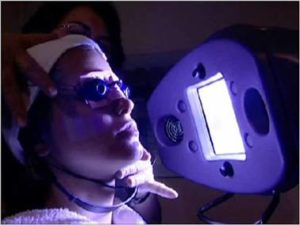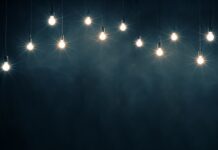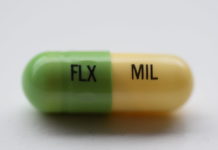In a new study, researchers found that bright light therapy was an effective treatment for nonseasonal major depressive disorder (MDD) while Prozac (Fluoxetine) alone did not outperform placebo. The randomized control trial, to be published in JAMA Psychiatry, was designed to test the efficacy of bright light therapy in adults with nonseasonal MDD.
 Bright light therapy is currently used as a treatment for seasonal depression, but researchers think that it may also be effective for those who suffer from non-seasonal depression. The researchers separated 122 participants diagnosed with moderate to severe MDD into four groups: (1) bright light therapy, (2) antidepressant alone (fluoxetine), (3) combined light therapy and antidepressant, and (4) placebo pill.
Bright light therapy is currently used as a treatment for seasonal depression, but researchers think that it may also be effective for those who suffer from non-seasonal depression. The researchers separated 122 participants diagnosed with moderate to severe MDD into four groups: (1) bright light therapy, (2) antidepressant alone (fluoxetine), (3) combined light therapy and antidepressant, and (4) placebo pill.
The participants were tested on the Montgomery-Åsberg Depression Rating Scale (MADRS) from baseline to the 8-week end point. The results showed that on average the combination therapy and light monotherapy were significantly superior to placebo. Fluoxetine alone, however, was not superior to placebo.
“For the respective placebo, fluoxetine, light, and combination groups at the end point, response was achieved by 10 (33.3%), 9 (29.0%), 16 (50.0%), and 22 (75.9%) and remission was achieved by 9 (30.0%), 6 (19.4%), 14 (43.8%), and 17 (58.6%).”
*
Lam, R. W., Levitt, A. J., Levitan, R. D., Michalak, E. E., Morehouse, R., Ramasubbu, R., … & Tam, E. M. (2015). Efficacy of Bright Light Treatment, Fluoxetine, and the Combination in Patients With Nonseasonal Major Depressive Disorder: A Randomized Clinical Trial. JAMA Psychiatry, 1-9.(Summary)















Other things that would beat Prozac:
Taking a walk daily, getting a pet, going to a Meetup group, Not taking Prozac, talking to a friend once daily, getting an hour more sleep a night.
And here’s how most psychiatrists would report this study: Prozac found to significantly benefit major depression when used with light therapy! Yay! Prescribe more pills!
Oh and how could I forget: major depression is not a valid real illness. The people in this study were completely different people – one might have been depressed because of a recent divorce, one might have lost a job, one might have few friends, another might have been abused by their parents verbally, another might have been beaten by a spouse, another might have financial problems. No common disease among them whatsoever, meaning this study alone means very little. The trend of such studies showing virtually no significant benefit for drugs is important, however.
Report comment
We have very different perspectives, opinions and life experiences. I am the social worker who was faced with putting a woman on a hold or letting the police officers take her to jail and I wrote a blog about it with dire results. Having worked in the jail, of course, I had a different view of the abuse she would suffer there. Anyway I always seek out your posts because they are so darned informative, beautifully phrased, interesting and often funny. Just to let you know this and you are my one link with MIA One day we will embrace each others differences and find our similarities and move forward
Report comment
Thank you for your kind words. Since it is so ridiculous and spurious to the point of absurdity, in a strange way I enjoy making fun of psychiatric diagnosing and (over)drugging and I hope others vicariously partake in that enjoyment.
Let me say that I think you should not be discouraged by responses to one article and not write other future articles on MIA. You are a good writer who put many valuable things in your articles. Do not take harsh-sounding comments from people who don’t know you personally too seriously. Just because you became the lightning rod for people upset over a certain psychiatric practice, doesn’t mean that you are bad. I hope you will brush those off and come back and contribute more postive things since the positive parts of your writing greatly outweighed any negative. I think I can say that I and several others who criticized that one article felt that way about you, even if it did not seem so at the time in that immediate section of comments.
Report comment
If nothing else, studies like this that get published in mainstream medical journals might help alert doctors to a fact that patients have been telling them for a long time…ANTIDEPRESSANTS DO NOT WORK! Please stop telling us they correct a chemical imbalance (yes, many doctors STILL say that) when they don’t.
Chip, chip, chip and keep chipping away at the false and misleading statements drug companies and their paid lapdogs have been putting into the public domain for far too long.
I certainly hope light therapy proves effective, but even if it doesn’t, studies like this might help reduce the prescription of dangerous and ineffective drugs.
Report comment
The “antidepressants do not work,” even when given as a “safe smoking cessation med.” And the doctors think the common symptoms of antidepressant discontinuation syndrome are “pneumonia,” an “ear infection,” the “flu,” “depression caused by self,” “schizophrenia,” “bipolar,” in other words, anything other than adverse reactions to their toxic drugs. THE ANTIDEPPRESSANTS ARE TOXIC DRUGS!
I will say, however, I live in a cloudy part of the country, and do have an at home light box treatment that works nicely in the short, cloudy winter months.
Report comment
Doctors don’t want to understand that antidepressants don’t work, because if they understand that they would lose profit.
Report comment
It is interesting that they did not do a comparison of side effects. I have to imagine that the side effects from light therapy are little or none, whereas we know the side effects of Prozac can be substantial. There is so much emphasis on “symptom reduction” as the ultimate measure of success that quality of life measures are almost systematically ignored. If you add in the side effect profile, this should make light therapy a first-line treatment for depression and relegate Prozac to the place it belongs – an adjunct treatment that can be tried when all else has failed – an act of desperation when we are ready to give up.
And of course, BPD is right that the whole premise of these studies is faulty when they act as if they are “treating” a “disease” called Major Depressive Disorder, rather than just experimenting to see if exposure to light makes people feel better, which is what is really happening.
— Steve
Report comment
For seasonal depression I just use a 300 watt incandescent bulb to light up my living space for a little wile after dark to chase away the gloomyness and it works.
“The medical experts who refuse to use low-energy lightbulbs in their homes: Professors have stocked up on old-style bulbs to protect against skin cancer and blindness.” http://www.dailymail.co.uk/health/article-2626564/The-medical-experts-refuse-use-low-energy-lightbulbs-homes-Professors-stocked-old-style-bulbs-protect-against-skin-cancer-blindness-So-YOU-worried.html
And don’t waste your money on fancy devices for bright light therapy , again the old school incandescents are still best.
http://www.google.com/search?q=300+watt+incandescent+bulb
And don’t tell me they “waste” energy because thats not true, in the winter the “wasted energy ” is heat from the bulb helps heat the house and of course when light hits thing they get warm so with the exception of the little light that escapes out the window their is zero energy loss.
Let’s talk about units first of all. Energy is usually described in units of Joules, and 4.18 Joule of energy is enough to heat one gram of water by 1 degree Celsius. The flow of energy is a “power”, which is usually described in units of Watts. 1 Watt is one Joule per second. So if you run a 90W heater for 60 seconds you get 90*60=5400 Joules of heat energy transferred to the surroundings. It doesn’t matter whether that heat came from a light bulb or a heater, 90W is still 90W.
And all forms of energy turn into heat eventually. So of the 100W that an incandescent light bulb uses, 90W turns immediately into heat. 10W flows out as visible light, but when that light strikes surfaces in your house some of it reflects and some of it turns into heat and heats up the surface.
http://scienceline.ucsb.edu/getkey.php?key=4006
Report comment